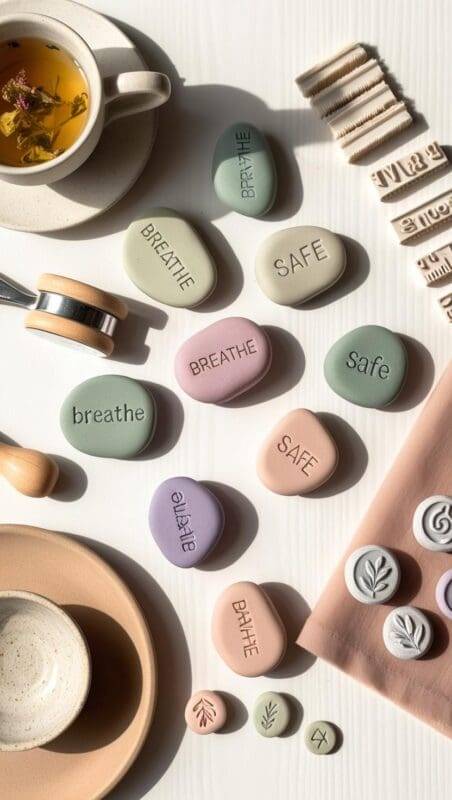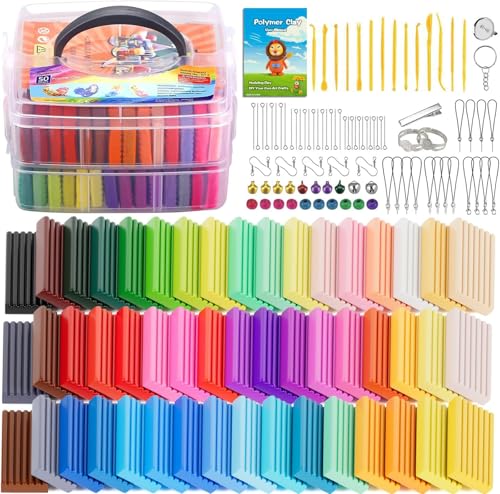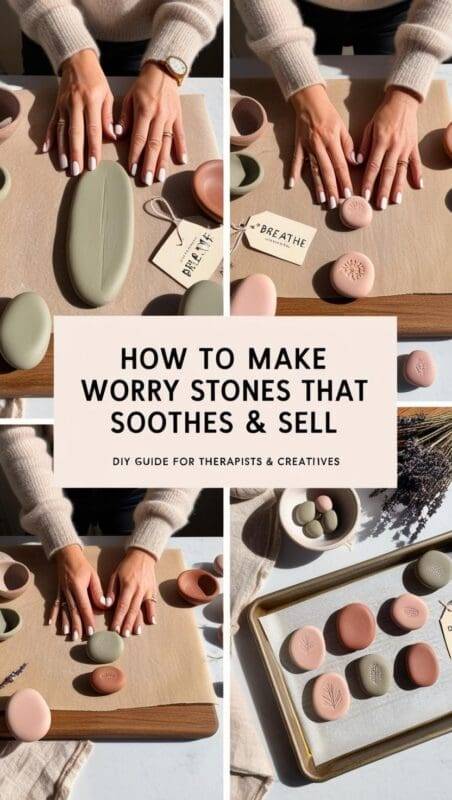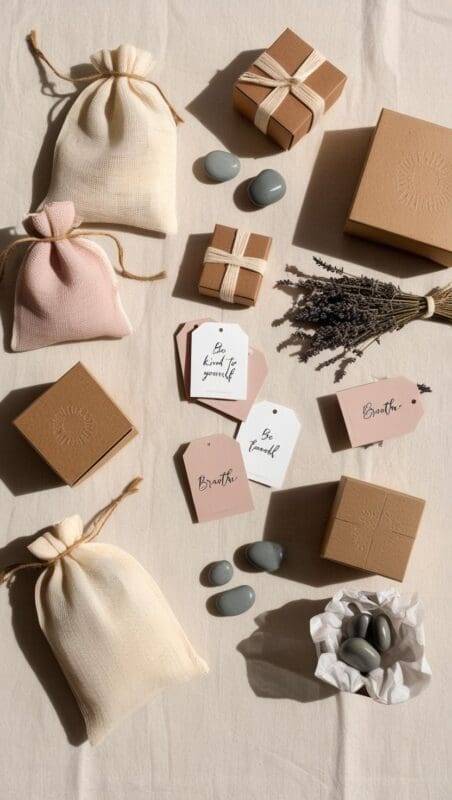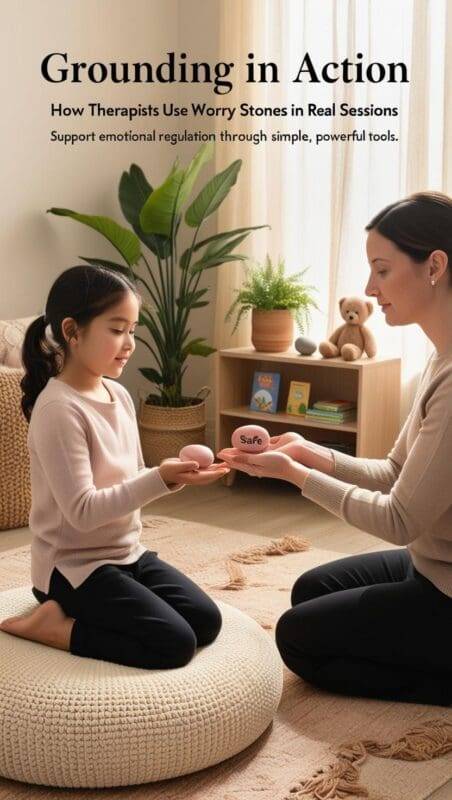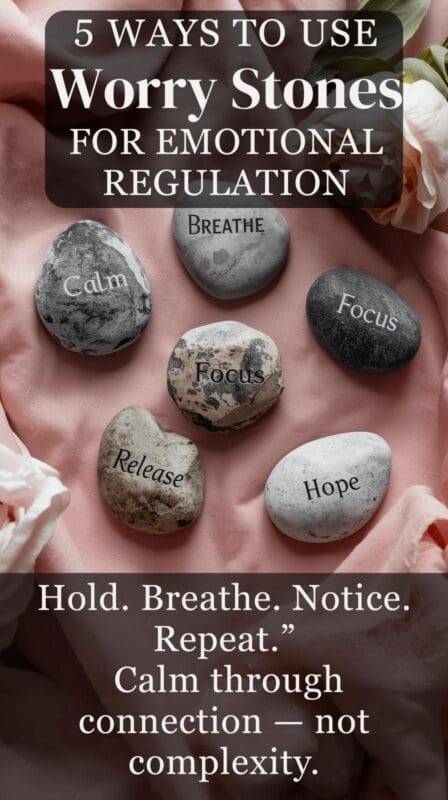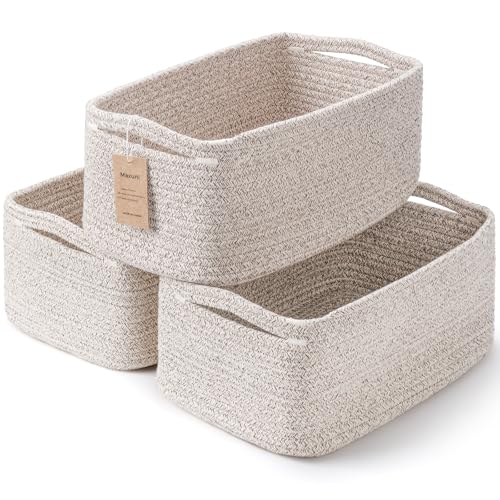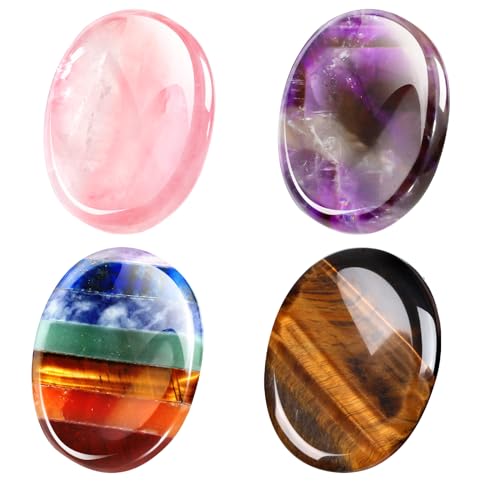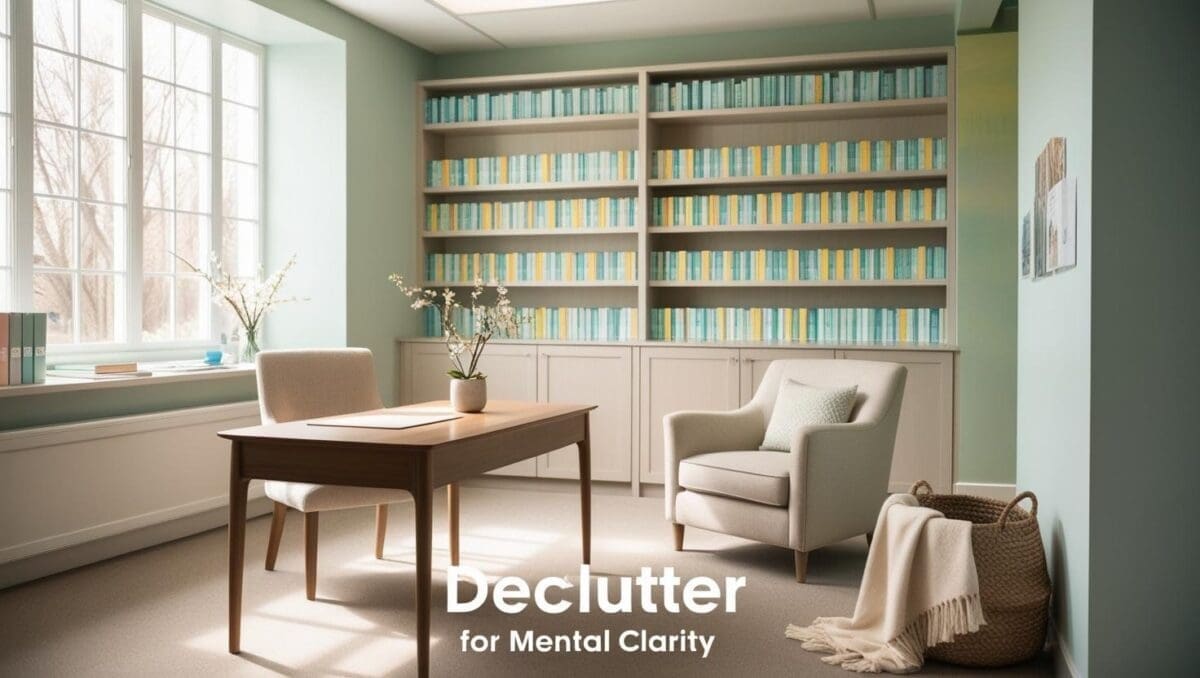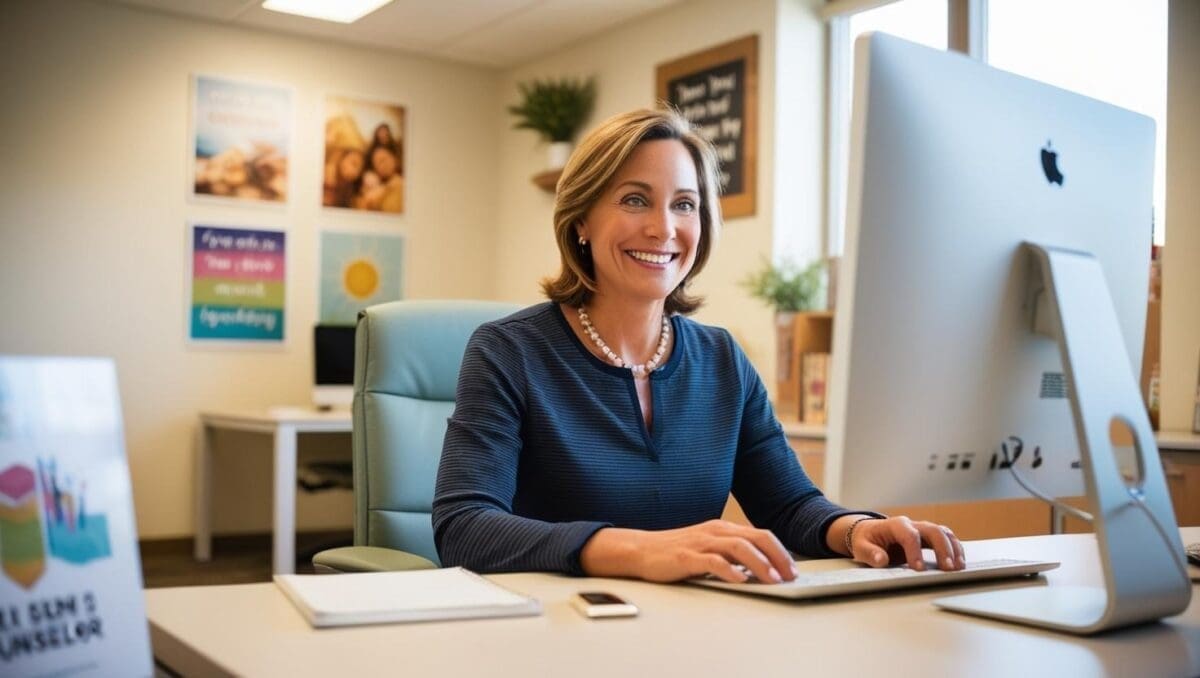How to Make & Sell Handmade Worry Stones & Fidget Tools: A Mindful Side Hustle for Therapists
Creating something with your hands can be deeply grounding—and for therapists, it can also be a powerful extension of your work. Handmade worry stones and fidget tools are not only calming aids for clients but also meaningful products that you can sell as part of a mindful, purpose-driven side hustle.
Whether you’re a school counselor, private practice therapist, or mental health advocate looking to expand your reach, this guide walks you through how to create, use, and market worry stones and sensory tools that resonate with your audience.
It’s important to disclose that this blog post contains affiliate links. This means that if you make a purchase through these links, we may earn a commission at no additional cost to you.
Worry Stone & Fidget Tool Starter Kit
Before you start shaping your first worry stone, it helps to have all the right materials within reach. The tools you use can make a big difference in how your stones feel, look, and last — especially if you plan to sell them later. Below you’ll find a carefully curated starter kit with options for every budget, plus links to trusted supplies that make the process smoother, safer, and more professional.
- Natural Clay – The raw material of this 10LBs natural air-dry clay is porcelain, also known as kaolin, with fine and uni…
- Pottery Tools Set – TOTAL40 PCS Clay and Pottery Tools to meet your needs, ideal for carving, modeling, cutting, scrapin…
- Non-toxic and odorless – Whether You Need Clay For Professionals, Or Home Use, ReArt Natural Clay Is An Ideal Choice.
Why Worry Stones & Fidget Tools Make Powerful Therapy Aids
Worry stones have been used for centuries as tactile grounding tools. When held or rubbed, they help calm the nervous system through rhythmic, repetitive motion—supporting self-soothing, focus, and anxiety relief.
Therapists often use them to help clients with:
- Emotional regulation during difficult conversations
- Sensory grounding for kids and adults with anxiety or ADHD
- Daily self-care practices as a portable mindfulness object
Pairing them with affirmations or intentional breathing makes them even more impactful.
The Original Intent Behind Worry Stones
Traditionally, worry stones are small, smooth stones with a thumb-sized indentation. People have used them throughout history to relieve stress by rubbing the stone with their thumb—a self-soothing technique rooted in ancient Greek and Tibetan practices.
As tactile tools, they work especially well for clients with anxiety, sensory challenges, or fidgeting habits. The rhythmic motion and sensory feedback can help anchor a person in the present moment, which is why many therapists include them in grounding exercises or trauma-informed care plans.
Where to Buy: quick comparison
Once you’ve experimented with a few designs, the next step is finding reliable materials. Not all clay, sealants, or finishes are equal — quality supplies make your stones smoother, more durable, and easier to package professionally. Below is a simple comparison guide to help you choose what fits your creative goals and budget.
| Item | Best For | Typical Price | Pros | Considerations |
|---|---|---|---|---|
| Polymer clay multipack (24–36 colors) | Variety without custom mixing | €12–€25 | Bright colors, bakes strong | Needs oven; follow cure temps |
| Air-dry clay 1kg | Classroom & no-bake | €8–€14 | No oven; easy to paint | Less durable; seal well |
| Alphabet/emoji mini stamp set | Affirmation stones | €6–€12 | Fast personalization | Press lightly to avoid warping |
| Micro-mesh sanding set | Velvet-smooth finish | €9–€16 | Professional feel | Rinse between grits |
| Mica powder set | Subtle shimmer | €8–€18 | Luxe look, hides fingerprints | Seal to prevent transfer |
| Satin glaze / UV resin | Finish & durability | €7–€20 | Water-resistant | Resin: mask + ventilation |
| Muslin bags + kraft boxes | Gift-ready packaging | €6–€15 (20–50 pcs) | Elevates perceived value | Add brand tag/insert |
How to Make Handmade Worry Stones (That People Actually Want to Keep)
Materials You’ll Need:
- Polymer clay or air-dry clay (non-toxic)
- Small sculpting tools or fingers to shape
- Stamps or alphabet tools for affirmations
- Optional: texture rollers, mica powders, or glaze
Ready to start crafting? Here’s a clear, beginner-friendly tutorial that walks you through each step of making polymer clay worry stones. These directions work beautifully for therapists, teachers, or anyone who wants to create a mindful handmade product that’s both beautiful and functional.
Step-by-Step Guide:
- How to Make Polymer-Clay Worry Stones (glossy, gift-ready)
- Time: 45–60 minutes active (plus baking)
- Yield: 8–12 stones per 1 block (57g) of clay
- Condition – Warm clay and fold until soft, no cracks.
- Shape – Roll a 3–4 cm oval; gently press your thumb to form the dish.
- Texture/Stamp – Add a spiral/leaf or stamp a word (“breathe,” “safe,” “present”).
- Bake – Place on parchment over tile; bake per clay brand (typically 110–130 °C, 15–30 min; thicker = longer).
- Sand – When fully cool, wet-sand 600 → 1200 → 3000 grit.
- Finish – Wipe dust; apply satin glaze (or UV resin for glassy finish).
- Package – Slip into a muslin bag with a Mindful Use Card (below).
- Mindful Use Card (copy to print, 2×3″)
- Hold the stone. Inhale for 4. Pause 2. Exhale for 6. Repeat 4 rounds. Whisper your word.
💡 Therapist tip: Tailor colors, textures, or symbols to match therapeutic goals—like calm tones for grounding or bold colors for empowerment.
🎨 Want more simple crafts with therapeutic value? Explore other easy-to-make tools like affirmation cards and sensory bottles—perfect for budget-friendly sessions or client gifts.
👉 Easy DIY Therapy Tools You Can Make on a Budget`
Troubleshooting & Pro finish
Common Issues (and fast fixes)
- Cracks after baking: Under-conditioned clay or over-bake. Warm more; bake on tile; tent foil if edges brown.
- Fingerprints: Use cornstarch dusting or vinyl gloves; sand with micro-mesh.
- Cloudy glaze: Too thick or humidity. Thin layers; allow full cure.
- Stamp ghosting: Press evenly before forming the thumb dish (not after) to avoid distortion.
- Air-dry clay flaking: Let dry 24–48 h; sand lightly; seal with matte varnish.
DIY Fidget Tools for Kids or Clients on the Go
In addition to worry stones, fidget tools like spinning rings, sensory keychains, or textured beads can be made with similar materials. These are especially helpful for children who benefit from movement-based focus tools or discreet classroom supports.
Simple Fidget Tool Ideas to Try:
- Quick-Build Fidget Tools (highly giftable)
- Aromatherapy Thumb Stone – Before sealing, rub 1–2 drops lavender into the indentation; seal satin. Add a “refill with a cotton swab” tip on the card.
- Clay Bead Roller Ring – Make 3–5 smooth beads; bake; string on elastic or memory wire; function = silent fidget.
- Braided Calm Keychain – 3 strips faux leather; braid; add swivel clasp + small clay charm.
- Texture Tiles – 3-pack 2×3 cm tiles with different textures for sensory desks; add ring.
Encourage kids to personalize them as part of a session—it can increase buy-in and connection to the tool.
How to Price & Package Your Worry Stones for Profit
Pricing handmade worry stones is part strategy, part intuition. While your creations hold emotional and therapeutic value, it’s still important to price them in a way that honors both your time and materials.
Step 1: Calculate Your True Costs
Start by adding up the cost of materials (clay, glaze, packaging), plus any small business fees like Etsy listings or payment processing. Then, estimate how long it takes to make each stone. Even if this is a mindful hobby, your time matters—build it into the price.
Pricing & Profit
Simple Pricing Example:
- Materials per stone: €0.35–€0.85 (clay, finish, packaging averaged)
- Time per stone: ~6–8 minutes. If you pay yourself €20/hour → €2.00–€2.70
- Overhead: €0.40 (fees, wear-and-tear)
Target retail: €7–€12 per stone (solo) | Sets: 3 for €22–€28
Wholesale to schools/clinics: 50–60% of retail; minimum 25 units; no packaging.
Step 2: Research Comparable Listings
Search Etsy and small-business marketplaces for similar products such as clay worry stones, fidget tools, or mindfulness accessories. Take note of average prices, color trends, and packaging presentation. This will help you position your product competitively while staying authentic to your style.
Step 3: Add Value Through Presentation
Clients and buyers often pay more for thoughtful presentation. A beautifully wrapped stone with a card explaining its meaning feels more intentional—and commands a higher price point. For example, worry stones that include a “breathing prompt” or affirmation tag tend to sell for 20–30% more than unbranded versions.
Step 4: Offer Bundles or Limited Editions
Consider offering calming-themed bundles—such as three worry stones for different moods (calm, courage, clarity)—or pairing stones with other therapist-made items like affirmation cards. Limited-edition color palettes or seasonal sets can also attract collectors and repeat buyers.
Therapist’s Pick: Packaging That Feels Grounded
For elegant, eco-friendly presentation, try kraft gift boxes lined with soft muslin bags. Add affirmation stickers or mini mindfulness cards to make each piece feel special. A cohesive unboxing moment can make your small business unforgettable.—
Packaging Ideas That Elevate Your Brand
Thoughtful packaging helps your tools feel intentional and therapeutic. Try this:
- Wrap each stone in soft muslin or kraft paper
- Add a small card with a mindfulness prompt or breathing exercise
- Include a handwritten note or quote (great for Etsy or local markets!)
Branding your packaging with affirming, grounded energy makes your product more than just an object—it becomes a message.
Therapist Branding Ideas for Handmade Tools
Your brand is more than a logo—it’s the emotional tone clients feel when they see or touch your creations. When your handmade tools reflect the same grounding, compassionate energy you bring into sessions, your products resonate on a deeper level.
1. Choose a Calming Color Palette
Stick to soft neutrals or nature-inspired tones that align with your therapy space or online aesthetic. Shades like sage, blush, stone, and ivory communicate warmth and safety—two feelings clients already associate with you.
2. Use Consistent Visual Language
Use the same fonts, backgrounds, and tone across your Etsy shop, business cards, and social media. Photograph your products on linen or wood surfaces under natural light. Consistency tells your audience that your creations are an extension of your professional care.
3. Infuse Your Message With Meaning
Include short affirmations, a mission line, or your personal “why.” For instance: “Each piece is handmade to bring calm into your day.” People don’t just buy worry stones—they buy the emotion and intention behind them.
Tools for Creating a Beautiful Brand
Design a cohesive visual identity with Canva Pro templates or print elegant logo cards with Vistaprint. Use soft-touch business cards or custom stamp kits for packaging. Small details elevate your products from handmade to high-end.
Therapist insight: Authentic branding isn’t about perfection—it’s about presence. When your handmade items feel like a natural continuation of your therapeutic mission, your audience senses the care and purpose behind each creation.
💻 Ready to Turn Your Expertise Into Impact (and Income)?
If you’ve ever dreamed of sharing your therapeutic insights beyond the session room, this is your sign to begin. My full guide — How to Start a Therapist Blog That Helps Others and Generates Passive Income — walks you through everything step by step: finding your niche, setting up your site, growing with Pinterest, and earning ethically.
👉 Read the full guide here and start building a blog that heals, teaches, and sustains.
How to Sell Handmade Worry Stones as a Therapist
There’s something special about giving calm a tangible shape. Handmade worry stones — smooth, weighty, grounding — can become quiet tools of comfort for both clients and gift buyers who love meaningful items. When created with care and ethical boundaries, they’re a beautiful blend of art, mindfulness, and gentle entrepreneurship.
🌿 Where to Sell
- Etsy: Perfect for reaching a mental-health–aware audience already searching for handmade wellness gifts. Use clear descriptions and warm, empathetic language that speaks to calm and self-regulation.
- Your therapy office or waiting area: Display them in a small bowl near a calming sign that says “Take what speaks to you.” It invites curiosity without pressure.
- Local maker’s markets or mental-health awareness events: These in-person spaces allow people to connect with the story behind your craft — which often becomes the reason they buy.
- Your website or newsletter: If you already share self-care printables or digital therapy tools, add a “Mindful Shop” section where worry stones or bundles complement your other offerings.
✨ Marketing Ideas That Feel Authentic
Worry stones sell best when paired with meaning. Instead of focusing on the object, share the story behind it.
- Write short reflections or affirmations that inspired each collection — for example, “This stone was smoothed during a quiet weekend spent reflecting on resilience.”
- Record Instagram Reels or TikToks showing the making process, your calming workspace, or the sensory feel of finishing each stone. Viewers connect with your peace, not just your product.
- Create gift bundles — a “Therapist Calm Kit” or “Grounding Gift Box” with a worry stone, affirmation card, and tea sachet. Thoughtful packaging elevates value and deepens emotional resonance.
📌 Use Pinterest to Grow Beyond Your Local Circle
Pinterest is one of the most powerful (and often overlooked) tools for handmade therapy-based products. People come there looking for calm aesthetics — “self-care gifts,” “mindfulness tools,” “therapy office ideas.” A single well-designed pin can bring steady, evergreen traffic to your Etsy store or website for years.
If you’re ready to grow your shop through Pinterest but don’t want to figure it all out alone, I highly recommend joining the Pin Lions Community. It’s where I learned how to design pins that actually convert and how to read analytics without overwhelm. The community is filled with supportive creators, and the guidance feels human and doable — not spammy or salesy.
👉 Join Pin Lions here to learn how to turn your handmade products and blog posts into sustainable Pinterest traffic.
💬 Ethical Note for Therapists
If you sell worry stones or handmade items as a practicing therapist, maintain clear boundaries:
- Make sure purchases are entirely optional and never tied to therapy outcomes.
- Use separate payment systems for client sessions and product sales.
- Communicate transparently that buying items is not a clinical recommendation — it’s an optional wellness resource.
When handled with care, selling handmade tools can extend your therapeutic message into the world — allowing your clients and followers to hold calm in their hands, one stone at a time.
🛍️ Ready to expand beyond handmade tools? Learn how to design and sell your own therapist-themed T-shirts, mugs, and stickers with ease.
👉 How to Sell Therapist-Inspired Merch
- Natural Clay – The raw material of this 10LBs natural air-dry clay is porcelain, also known as kaolin, with fine and uni…
- Pottery Tools Set – TOTAL40 PCS Clay and Pottery Tools to meet your needs, ideal for carving, modeling, cutting, scrapin…
- Non-toxic and odorless – Whether You Need Clay For Professionals, Or Home Use, ReArt Natural Clay Is An Ideal Choice.
Common Uses for Worry Stones in Therapy
Common Uses for Worry Stones in Therapy
Worry stones may seem small, but they can play a big role in the emotional rhythm of your sessions. These tactile tools meet clients where words sometimes can’t—through grounding touch, gentle focus, and mindful repetition.
1. Grounding Exercises for Clients With Trauma or Dissociation
Invite your client to hold a worry stone as you guide them through slow breathing or present-moment awareness. The simple act of rubbing the stone helps regulate the nervous system and creates a sensory anchor. Over time, it becomes a comforting ritual that says: “I can come back to myself.”
2. Transitional Moments
Therapy sessions often open or close with emotion. Using a worry stone at these transition points—before diving into a difficult topic or while wrapping up a breakthrough—can help the client feel settled. You might even have a small dish of stones near the door and invite clients to choose one intuitively before sitting down.
3. Reflective Homework or Self-Soothing Practice
Encourage clients to keep their worry stone in a pocket, bag, or on their nightstand. Each time they reach for it, they can note how they’re feeling and jot a short line in a journal: “What emotion did I notice just now?” This pairing of touch and reflection deepens self-awareness between sessions.
4. Parent-Child Therapy
In family or play-based sessions, matching worry stones help children and caregivers practice co-regulation. A child might keep a bright-colored stone while the parent holds a neutral one, reminding them they’re connected even when apart. Decorating stones together can also open gentle conversations about safety and belonging.
5. Group Work, Classrooms, and Calming Corners
Teachers and counselors can integrate worry stones into sensory kits or mindfulness stations. A simple basket labeled “Calm Tools” invites students to choose what they need to refocus. In small therapy groups, passing a worry stone during check-ins can symbolize shared space and emotional grounding.
Whether used in one-on-one sessions or creative classroom settings, worry stones embody the essence of therapeutic touch—calm, safe, and deeply human.
Therapist’s Pick: Sensory Basket Essentials
Build your own calming kit with smooth thumb stones, woven baskets, and aromatherapy oils for scent-based grounding. These small details transform your therapy space into a sanctuary for regulation and reflection.
You can introduce worry stones during:
- Grounding exercises for clients with trauma or dissociation
- Transitions—such as starting or ending a session
- Homework prompts—like keeping the stone in a pocket and journaling moments of tension
- Parent-child therapy—create matching worry stones to promote emotional connection at home
They’re also effective as part of take-home kits, sensory baskets, or classroom calming corners.
A Mindful Side Hustle That Aligns With Your Values
Creating and sharing tools that support emotional regulation, nervous system healing, or daily mindfulness is more than a craft—it’s an extension of the work you already do. And if you’re looking for a creative outlet that also adds income, this is a meaningful place to start.
You don’t need to be a full-time maker to make an impact—just a little intention, heart, and clay.
FAQ
Are polymer-clay stones safe to hold daily?
Yes, after fully cured and sealed. Use reputable brands; bake per instructions.
What’s the best sealant?
Satin polymer glaze for a natural look; UV resin for a glassy, wipe-clean finish.
Air-dry vs polymer—what should I choose?
Air-dry for classrooms and no-oven setups; polymer for durability/gifting.
How do I clean worry stones used in office settings?
Wipe with mild soap/water on a microfiber cloth; avoid harsh alcohol on mica.
How many can I make per hour?
Batching 12–16 is typical; condition all clay, then shape, stamp, and bake together.
Want to Deepen the Impact?
If you enjoyed this guide, you might also love:
- 5 Essential Things Every Therapist Needs to Know About Nervous System Regulation
- Easy DIY Therapy Tools You Can Make on a Budget
- Therapeutic Swings for Child Therapists
Looking for more ways to turn your creativity into a meaningful business? Explore my Therapist Side Hustle Series for step-by-step guides on how to create, package, and share mental health-inspired products that support both your clients and your income.
Explore More Mindful Side Hustles
Love crafting with purpose? Discover more ideas in our Calming Tools Side Hustle Guide and Relaxing Side Hustles for Therapists.
Affiliate Disclosure
This article may contain affiliate links. I only recommend items I believe are helpful for therapists, counselors, and educators. If you purchase through these links, I may earn a small commission at no extra cost to you.

About the Author
Hi, I’m Eve, a former school counselor with a master’s degree in School Psychology and a passionate advocate for children and families navigating sensory challenges. As a mom of children with sensory sensitivities, I deeply understand the journey special-needs parents face, and I dedicate myself to researching and sharing practical solutions to help children thrive and feel comfortable in their bodies. My goal is also to empower counselors, therapists, and psychologists with creative strategies and supportive resources to enrich their everyday practice. When I’m not writing or exploring new therapeutic approaches, you’ll find me spending quality time with my family and continually seeking inspiration from everyday moments.


